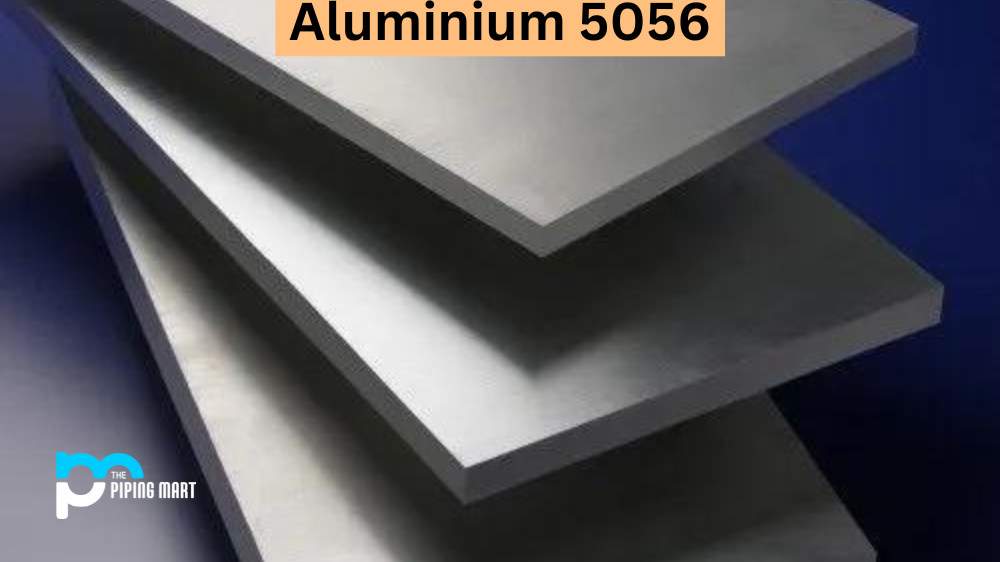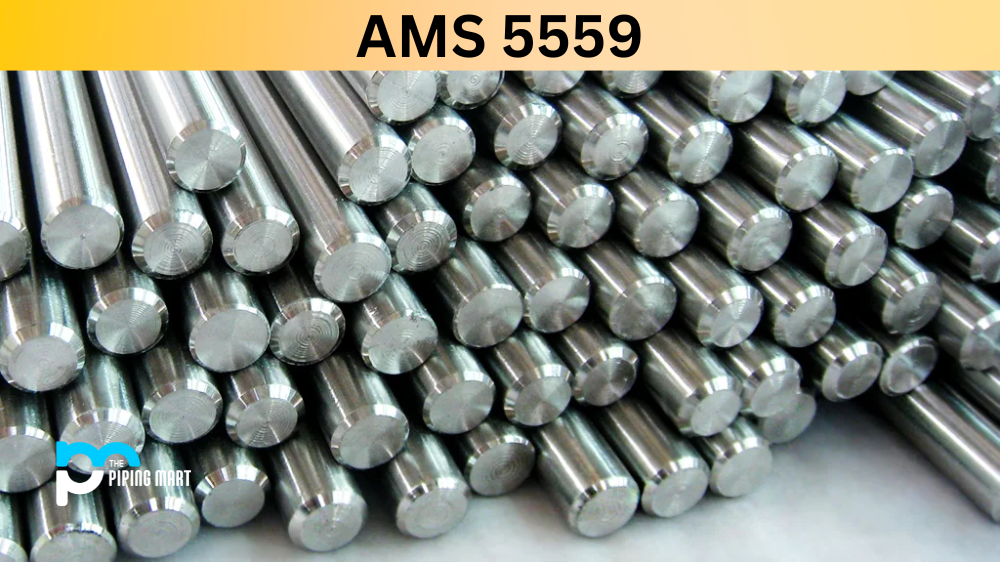Aluminium 5056 is an alloy of aluminium-magnesium with a high strength-to-weight ratio. It is often used in constructing bridges, boats, ships and other structures due to its corrosion and heat resistance. This article will provide an overview of aluminium 5056 compositions, physical properties, mechanical properties, uses, and machining and welding info.
5056 Aluminium Composition
Aluminum 5056 (UNS A95056) is an alloy composed mainly of aluminium (95%) and magnesium (4%). It contains a maximum of 0.25% copper and 0.20% chromium for superior corrosion resistance. The alloy also contains manganese in small quantities to improve its strength and durability.
| Element | Content (%) |
|---|---|
| Aluminum, Al | 95.0 |
| Magnesium, Mg | 5.0 |
| Manganese, Mn | 0.12 |
| Chromium, Cr | 0.12 |
5056 Aluminium Physical Properties
The physical properties of Al 5056 are impressive compared to other alloys in its class. The alloy has a 2.7 g/cm3 density, making it significantly lighter than steel. Depending on the composition, it has a melting point range between 500°C – 630°C, and can reach temperatures up to 400°C without damage or distortion due to expansion or contraction. The thermal conductivity is good at 167 W/mK, while the electrical conductivity is excellent at 30 MS/m at 20 °C.
| Properties | Metric | Imperial |
|---|---|---|
| Density | 2.64 g/cc | 0.0953 lb/in3 |
5056 Aluminium Mechanical Properties
Alloy 5056 has excellent mechanical properties that make it highly desirable for many applications such as bridges, boats, ships and more due to its high strength-to-weight ratio combined with good ductility and toughness, making it resistant to fatigue cracking even under cyclic loading conditions. It has a yield strength of 300 MPa with an ultimate tensile strength of 366 MPa which can be increased by cold working or heat treatment processes like quenching or tempering, which increases hardness but decreases ductility.
| Properties | Metric | Imperial |
|---|---|---|
| Elastic modulus | 70-80 Gpa | 10152-11603 ksi |
| Poisson’s ratio | 0.33 | 0.33 |
Thermal Properties
| Properties | Conditions | ||
|---|---|---|---|
| T (ºC) | Treatment | ||
| Thermal expansion | 24.1 (10-6/ºC) | 20-100 | – |
| Thermal conductivity | 112 (W/mK) | 25 | H38 |
5056 Aluminium Equivalent
| AMS 4005 | AMS 4176 | AMS 4177 | AMS 4349 |
| ASTM B316 | DIN 3.3555 | MIL A-81596 | MIL R-5674 |
| QQ A-430 | SAE J454 | MIL R-8814 | ASTM B211 |
5056 Aluminium Uses
Due to its excellent corrosion resistance and heat resistance combined with lightweight properties, Aluminum 5056 finds use as structural components in bridges, ships, aircraft etc., where low weight and long-term performance are both important requirements for successful application performance over long periods of time without significant maintenance costs or downtime from regular inspections or repairs resulting from corrosion damage or other factors related to environmental exposure such as saltwater air from coastal locations etc., Additionally aluminium50 56 finds extensive use in the transportation industry such as bus body frames and boat panels due to its superior corrosion resistance when compared with steel alloys commonly used for similar applications.
Corrosion Resistance
Of all the grades of aluminum, few can compete with 5056 when it comes to corrosion resistance. This grade has repeatedly proven its strength in harsh environments and can even resist saltwater corrosion. Its superior structural integrity makes it ideal for outdoor applications, and it is often used in products exposed to a wide range of weather conditions. Additionally, its low weight makes it a popular choice among fabricators looking for an aluminum alternative that doesn’t add additional strain on construction materials. If you’re looking for superior corrosion resistance that won’t weigh you down, then 5056 Aluminum is a perfect choice.
Heat Resistance
Aluminium 5056 is a popular choice for industrial applications because of its remarkable heat resistance. It has a higher strength-to-weight ratio than other aluminium alloys, making it ideal for heavy-duty applications requiring superior corrosion and heat resistance. The alloy also features the highest ductility and resilience when exposed to elevated temperatures, making it perfect for operations taking place in high-temperature settings such as air space sectors or power plants. Aluminium 5056 is one of the few materials that can consistently and reliably perform under extreme temperatures without significant ageing, wear or buffering. In short, this versatile material is essential for industries that deal with the heat on a frequent basis.
Heat Treatment
The process of heat treating aluminium 5056 is a method of strengthening metals like aluminium alloys by allowing them to undergo heating and cooling cycles. This two-step process increases the material’s strength and improves its machinability, ductility, and hardness. Its glossy silver sheen and smooth, uniform holes can easily be recognised when drilled. Heat treatment can be adjusted depending on the desired results; increasing strength may require higher temperatures, while maintaining full formability may require lower temperatures. Aluminium 5056 is an excellent choice for heat treatment due to its versatility and relative affordability compared to other heat-treatable alloys.
Welding
Aluminium 5056 welding is essential for anyone looking to make strong, reliable welds on various materials. It is often used in the automotive, aerospace and marine industries due to its strength and favourable weight-to-strength ratio. When working with Aluminium 5056, it’s important to ensure that you have the proper safety gear, including gloves, a face protector and appropriate clothing. The process requires precision and attention to detail; high-quality welds can only be achieved by correctly controlling variables such as current, voltage and speed. With practice, anyone can master the basics of Aluminium 5056 welding and successfully complete projects requiring these types of welds.
Conclusion
In summary, Aluminium 5056 provides robust performance characteristics that make it suitable for use in many different industries – from transportation to structural components – due to its superior corrosion resistance combined with good mechanical properties, including ductility & toughness that make it highly resistant against fatigue cracking even under cyclic loading conditions when compared with other materials like steel alloys commonly used for similar applications making it a preferred choice among engineers looking for tougher but lighter metals suitable for their projects. Additionally, this alloy can be welded & machined easily & quickly without significant changes in performance characteristics, making it an ideal choice for many applications where cost-effectiveness & quick turnaround times are important considerations along with overall quality & reliability needed for successful long-term performance.

Abhishek is a seasoned blogger and industry expert, sharing his insights and knowledge on various topics. With his research, Abhishek offers valuable insights and tips for professionals and enthusiasts. Follow him for expert advice on the latest trends and developments in the metal industry.




